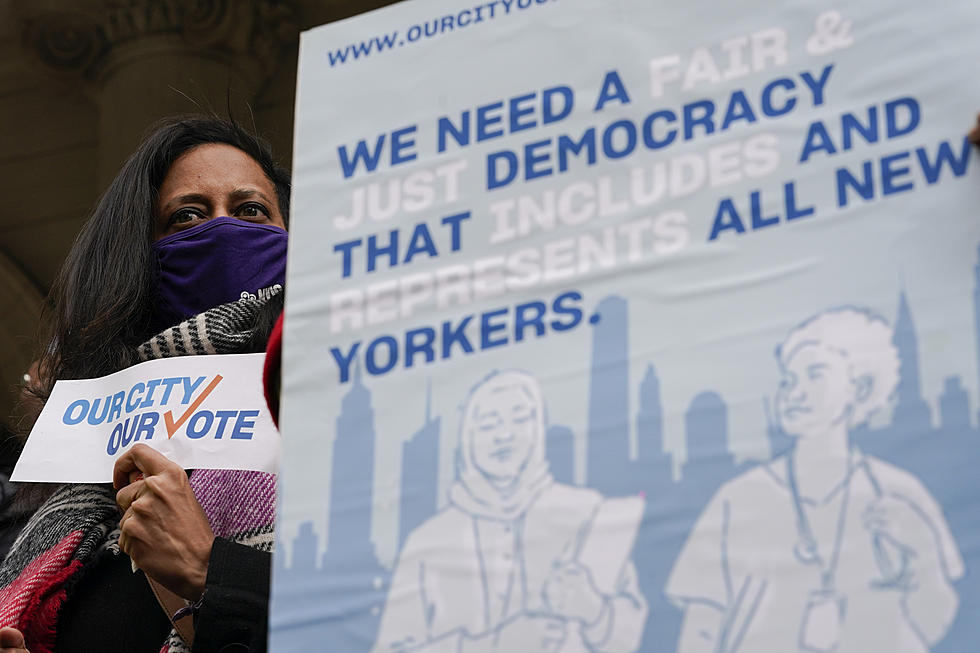
Only 2 NJ towns don’t have any immigrants — See the ‘Melting Pot’ map
They come from all over the world, seeking a better life for themselves and their families.
Immigrants are everywhere in New Jersey.
Well, almost everywhere.
Out of the 565 municipalities in the state, only two don't have any immigrants, according to U.S. Census estimates. The tiny towns of Pine Valley and Walpack are outliers in a state where 1 in 5 people were born outside of the United States.
This week, New Jersey 101.5 presents “The Melting Pot” — a look at New Jersey’s long and proud immigrant history.
According to James Hughes, a Rutgers University professor at the Edward J. Bloustein School of Planning and Public Policy, immigrants made up more than 25 percent of the Garden State’s population at the beginning of the 20th Century.
IMMIGRANTS IN NJ
Towns with the most immigrants. Estimates and % of population
1. Jersey City: 104,565 (40%)
Top nationality: India
2. Newark: 81,187 (29%)
Top nationality: Ecuador
3. Elizabeth: 60,559 (47%)
Top nationality: Colombia
4. Paterson: 50,354 (34%)
Top nationality: Dominican Republic
5. Edison: 45,667 (45%)
Top nationality: India
6. Union City: 40,334 (59%)
Top nationality: Dominican Republic
7. Woodbridge: 31,686 (31%)
Top nationality: India
8. West New York: 51,860 (59%)
Top nationality: Cuba
9. North Bergen: 62,590 (49%)
Top nationality: Cuba
10. Clifton: 85,552 (35%)
Top nationality: Peru
Towns with the greatest % of immigrants.
1. Palisades Park - 64%
Top nationality: Korea
2. Union City - 59%
Top nationality: Dominican Republic
2. West New York - 59%
Top nationality: Cuba
2. East Newark - 59%
Top nationality: Ecuador
5. Guttenberg - 58%
Top nationality: Cuba
6. Fort Lee - 53%
Top nationality: Korea
7. Harrison (Hudson) - 52%
Top nationality: Peru
8. North Bergen - 49%
Top nationality: Cuba
8. Fairview - 49%
Top nationality: Guatemala
10. Dover - 48%
Top nationality: Colombia
Source: U.S. Census 2010-2014 American Community Survey 5-year Estimates
But at the start of World War I, a series of immigration restrictions were put in place.
“The percentage of immigrants settling in the Garden State had dwindled to about 10 percent until President Lyndon Johnson signed the immigration law of 1964,” he said. “What that did was open immigration to the United States from those nations that had been systematically excluded.”
As part of that legislation, Johnson also signed a family unification provision that allowed relatives of those immigrants already here to emigrate to America as well.
According to Janice Fine, a professor of labor studies, immigration and employment relations at Rutgers University, “the foreign-born share of New Jersey’s population went from 12.5 percent in 1990 to 17.5 percent in 2000 to about 22 percent in 2013. About 1.9 million immigrants today live in New Jersey.”
She notes, “Of the foreign-born population in New Jersey, 32 percent entered in the 1990s, 21 percent entered in 2000 or later, and about 25 percent entered prior to 1980.”
New Jersey has the third largest percentage of immigrants of any state in the Nation, after California and New York.
To see where all these immigrants have settled, check out our interactive map at the end of this story.
Why come to Jersey?
“New Jersey has always been an immigrant destination mostly because immigrants kind of started in New York," Fine says. "Many immigrants emigrated to the cities, and then came from the city to New Jersey.”
Even today, Hudson County — across the river from New York — has the greatest concentration of immigrants in the state.
Hughes says some immigrants decide to come to New Jersey for economic reasons, perhaps the promise of a job, but “once some social and cultural roots are established, that becomes a magnet for other members.”
“Sometimes it’s called the Colony Model: The colony is initially established and that becomes a very attractive feature for attracting more individuals.”
Fine adds, “Once one group of immigrants arrives in New Jersey, it’s much easier for immigrants after that to keep coming because they can get information about jobs and housing and schools.”
Hughes said over the decades “New Jersey has always been an immigration friendly state, essentially New Jersey has hosted virtually every immigrant groups that has come to America.”
“New Jersey is truly a melting pot. We are a state that’s long been known as a place that was welcoming, a place that had many, many enclaves of immigrants all across the state.”
Mapping where NJ immigrants live
Zoom in and click on a town to see how many immigrants make up the population. The brighter the red, the greater the percentage of foreign-born residents. Map is best viewed on a desktop computer or on our app. The map is based on Census population estimates, so numbers may not be exact.
Source: U.S. Census 2010-2014 American Community Survey 5-year estimates
With reporting by Sergio Bichao
You can contact reporter David Matthau at David.Matthau@townsquaremedia.com
More From New Jersey 101.5 FM









